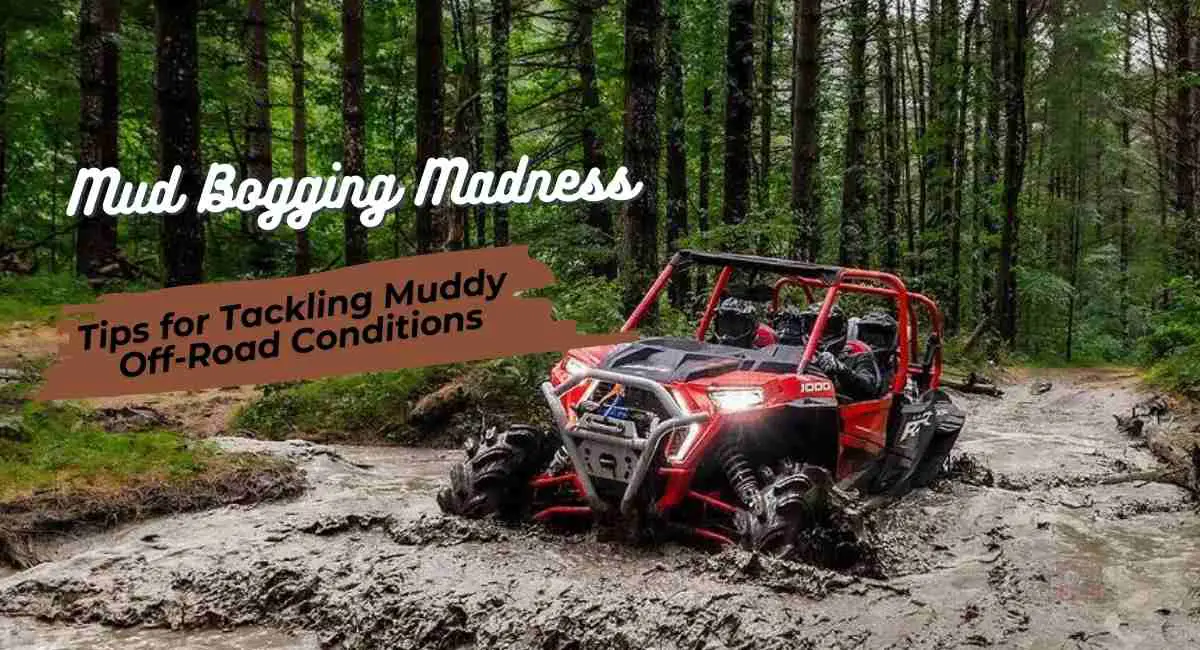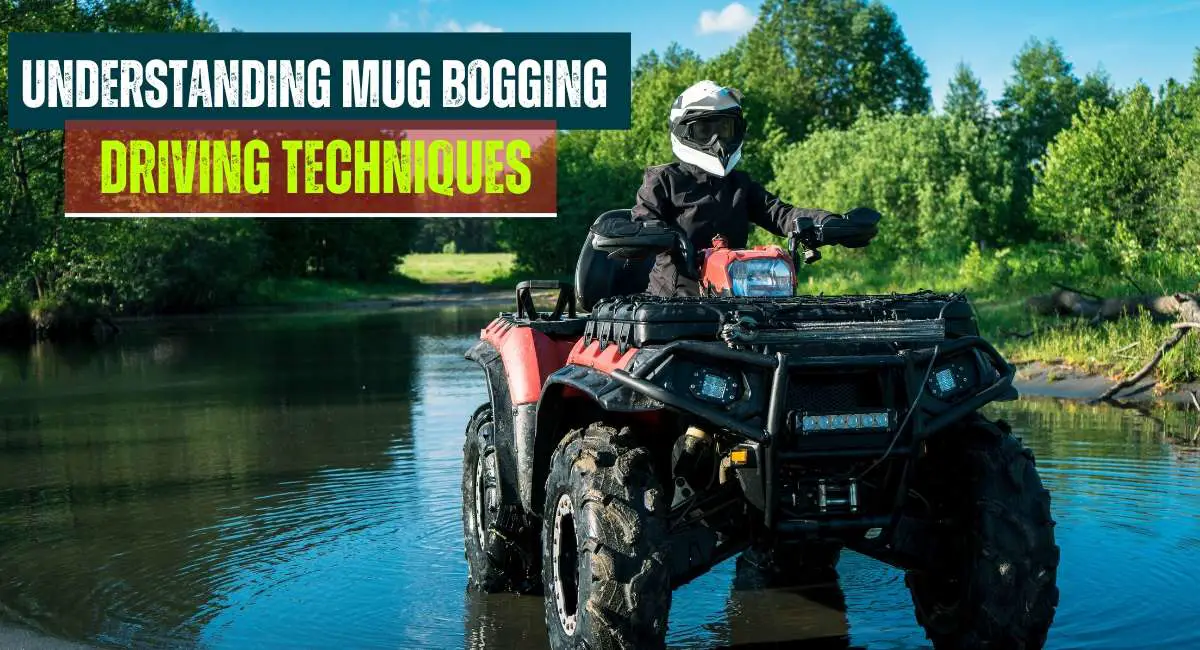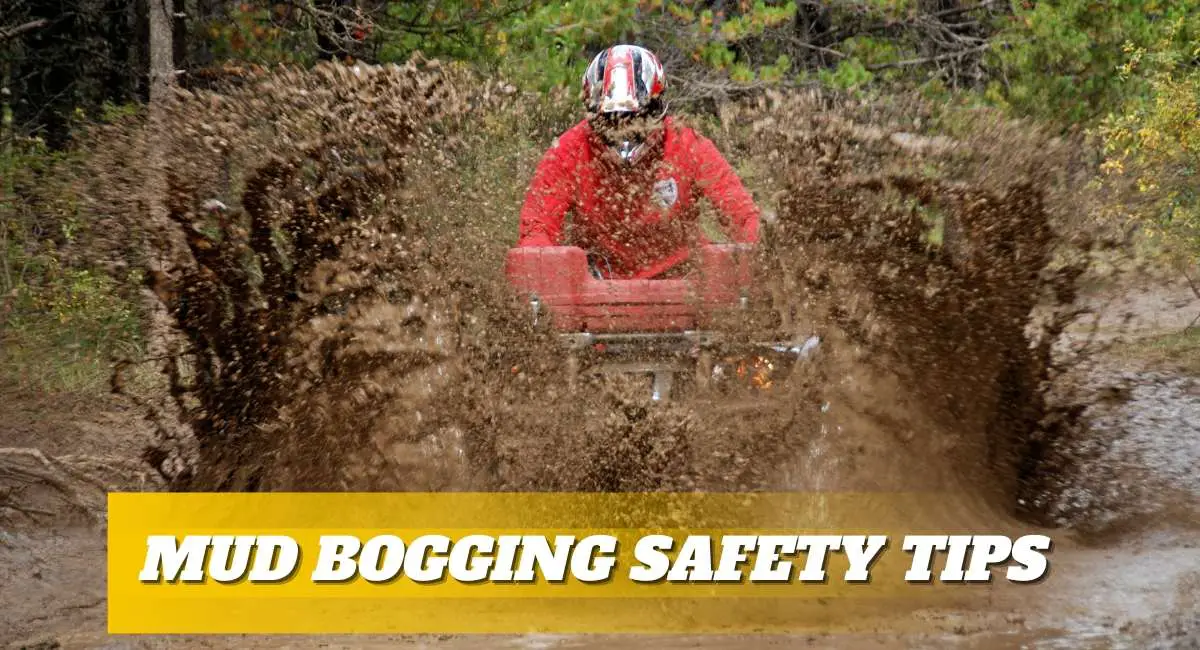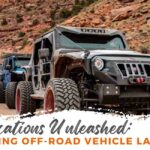Mud bogging is a dynamic and adrenaline-pumping form of off-road motorsport where participants navigate specially designed courses filled with deep mud pits and challenging obstacles. The participants showcase their driving prowess and the capabilities of their off-road vehicles as they confront the mucky and often unpredictable terrain.
The sheer excitement and unpredictability of mud bogging contribute to its widespread appeal among off-road enthusiasts. The challenge of maneuvering through treacherous mud pits, the roar of powerful engines, and the sight of mud-splattered vehicles soaring through the air create a unique and adrenaline-fueled experience.
However, mud bogging demands careful preparation to ensure optimal performance and safety. Proper preparation involves equipping your vehicle with specialized gear, understanding effective driving techniques, and prioritizing safety measures.
Overview of Mud Bogging
Mud bogging places drivers and their vehicles in the heart of challenging and treacherous conditions. Mud bogs typically consist of purpose-built tracks or natural pits filled with thick, viscous mud. The unpredictable nature of the muddy terrain, combined with strategically placed obstacles, makes navigating these courses a true test of skill and endurance.
However, not all vehicles are created equal when it comes to tackling the demanding terrain of mud bogs. Specialized off-road vehicles equipped with features such as high-clearance suspension, mud tires with aggressive tread patterns, and powerful engines are often preferred.
Trucks, off-road buggies, and modified 4×4 vehicles are popular choices thanks to their durability and aggressiveness of powering through muddy challenges.

Essential Gear and Equipment for Mud Bogging
Mud Tires
Mud bogging requires specialized and high-performance off-road tires designed to excel in the challenging muddy terrains. Stock all-terrain tires are versatile but can’t suffice tough mud terrains. Mud tires are characterized by dynamic tread patterns, wide gaps between treads, and self-cleaning properties for effective propulsion. These tires offer optimal traction and maneuverability required for mud bogging.
Lift Kits
Lifts are aftermarket modifications designed to raise the capabilities of your vehicle to allow it to drive over mud. Their primary purpose is to provide ample space for larger tires and increased ground clearance. Maneuvering through challenging mud holes is a common hurdle, and having a few extra inches of lift reduces the amount of mud your four-wheeler needs to push through.
Snorkel Kit
Consider giving your air box enough air circulation, especially if your machine is submerged in water or mud. The best way to achieve this is to elevate the air intake point of a vehicle’s engine using a snorkel kit. This kit include a minimum of three risers covering the air box, clutch air intake, and clutch exhaust, respectively.
Protective Gear
Protective gear is non-negotiable regardless of your level of expertise. The key protective gear during mud bogging includes helmets, protective clothing, eye protection, fire extinguishers, a first aid kit and seat harnesses.
Recovery Gear
Recovery gear is essential in instances where your vehicle gets submerged. Apart from the recovery equipment, consider securing toolboxes and spare wheels to your vehicle frame for quick repairs.

Driving Techniques
Mug bogging is always easy to master, but it demands a combination of skill, technique, and a deep understanding of the vehicle and the challenging terrains you’re likely to encounter. The unpredictable nature of mud bogs and their varying depths, textures, and obstacles requires drivers to adapt and refine their technique constantly.
I. Throttle Control
Throttle control is a critical aspect of navigating through mud bogs successfully. Proper throttle management not only ensures effective propulsion but also minimizes the risk of getting stuck in the mud.
Smooth Acceleration
Gradual and smooth acceleration is key in mud bogging. Abrupt and aggressive throttle inputs can lead to excessive wheel spin, causing the vehicle to dig into the mud and making it more challenging to move forward.
Feathering the Throttle
Feathering the throttle involves modulating the accelerator pedal delicately, which allows the tires to maintain traction without losing momentum. This tactic is particularly useful in preventing wheel spin, especially in deep mud.
Throttle Lift in Obstacles
If you’re tackling obstacles such as rocks or roots, consider using a throttle lift. This involves releasing the throttle briefly to allow the suspension to compress and then reapplying it to power the vehicle through the obstacle.
Harnessing Power
If the terrain is excessively challenging, consider utilizing bursts of power to help the vehicle build momentum and overcome obstacles. However, steer clear of maintaining continuous high RPMs to prevent unwarranted wheel spin.
II. Weight Distribution
Optimizing weight distribution is also a critical factor in mud bogging. Ideally, proper weight distribution helps prevent getting stuck while allowing you to navigate through mud bogs effortlessly.
Front-Heavy Setup
Having more weight on the front of the vehicle can help increase traction on the front tires, making it easier to plow through mud. You can achieve this by placing heavier components, such as the engine or additional ballast towards the front of the vehicle.
Limited Slip or Locker Differentials
Upgrading to limited-slip differentials or lockers can help distribute power more evenly between the wheels. This will, in turn, prevent one wheel from spinning freely while the other is stuck. This can be particularly useful in uneven muddy terrain.
Weighted Tires or Tire Ballasts
Weighted tires or tire ballasts are often employed to enhance traction during mud bogging endeavors. This involves the addition of extra weight to the tires, often achieved through specialized tire ballasts. The primary objective is to increase the downward force exerted by the tires to improve their grip on the mud.
Adjusting Weight Distribution Based on the Terrain
Tailoring weight distribution to the specific mud type can help enhance traction. For instance, if you are tackling thick and sticky clay, adding more weight towards the rear can help prevent getting stuck. On the other hand, shifting weight to the front helps improve steering control in watery mud.
III. Floatation Techniques
Floatation techniques are essential strategies employed in mud bogging to prevent a vehicle from sinking into deep or watery mud. These techniques focus on maintaining buoyancy and preventing the car from becoming stuck.
Maintaining Momentum
One of the easiest ways to stay afloat is by maintaining steady momentum. Abrupt stops or hesitation can lead to a loss of momentum and increase the risk of getting stuck. That said, keeping a consistent speed helps prevent the vehicle from sinking excessively into the mud.
Reducing Tire Pressure
Lowering tire pressure helps increase the contact area between the tire and the mud, thereby providing better flotation. This allows the tires to ride on top of the mud rather than sinking into it.
Using Lift Kits
Lift kits help elevate the vehicle’s chassis, which provides additional ground clearance. This not only helps in avoiding obstacles but also aids the vehicle in staying afloat.
IV. Proper Gear Selection
Mud bogs often feature varying terrain conditions. The ability to adapt to these changes by selecting the appropriate gear ensures that the vehicle can tackle different challenges effectively.
Low-Range Gears for Deep Mud
The easiest way to navigate through deep mud is by engaging low-range gears. This gear range provides increased torque, which allows the vehicle to power through mud without relying solely on wheel speed.
High-Range Gears for Surface Mud
If you’re dealing with shallower mud or a smoother surface, high-range gears are often suitable. These gears allow for higher speeds, making it easier to maintain momentum without overwhelming the tires with excessive torque.
Avoiding Over-revving
Over-revving the engine can lead to excessive wheel spin and loss of traction. As such, it’s important to avoid staying in too low a gear for the conditions, as this can cause the tires to spin without propelling the vehicle forward.
Responsive Gear Changes
Always be responsive to changes in the mud terrain. If the consistency changes suddenly, such as when transitioning from thick mud to a more solid surface, be prepared to adjust the gear accordingly to maintain control.
Monitoring Engine RPM
Keep an eye on the engine RPM to gauge the effectiveness of the selected gear. The goal is to keep the engine operating in a range that delivers optimal power without straining the drivetrain.
V. Braking Techniques
Braking while mud bogging requires careful consideration due to the unique challenges posed by muddy terrain. As such, drivers need to employ proper braking techniques to avoid skidding or losing control.
Gentle Braking
The safest way to brake during mud bogging is to apply brakes gently, especially in places where traction is variable. Abrupt or aggressive braking can lead to skidding, loss of control, or getting stuck in the mud.
Anticipate Braking Distance
Mud can significantly increase braking distances. Always anticipate longer stopping distances in muddy conditions and adjust your speed accordingly. You may also want to maintain a safe following distance from other vehicles to account for the extended braking needed.
Feathering the Brakes
Similar to feathering the throttle, feathering the brakes involves braking gradually and intermittently. This approach helps prevent wheel lockup and skidding, especially when navigating through uneven or slippery mud surfaces.
Avoid Heavy Braking in Deep Mud
Heavy braking can lead to the vehicle sinking further in deep mud. As such, you may want to rely more on throttle control and momentum to navigate through deep mud while using brakes sparingly to maintain control.
Practice Controlled Stops
Practice controlled stops in different mud conditions to learn how your vehicle responds. Familiarizing yourself with the vehicle’s braking behavior in mud will help you make informed decisions during challenging off-road situations.
Vehicle Recovery Tactics
Getting stuck in the mud can be both frustrating and inconvenient. Luckily, there are multiple effective methods you can use to extract your vehicle from such predicaments. The vehicle recovery techniques include;
- Winching: If you have a winch on your vehicle, you can use it to pull your vehicle out. This method involves using a motorized winch with a cable or synthetic rope attached to a solid anchor point. The winch then pulls the vehicle out of the mud.
- Recovery/Snatch Straps: Recovery straps are specifically designed for dynamic recovery operations, making them suitable for mud bogging situations. These straps are elastic, which allows them to stretch and absorb energy during the recovery process. All you need to do is attach one end to the stuck vehicle’s recovery points and the other to a recovery vehicle’s tow hitch to pull your car out of the mud.
- Hi-Lift Jacks: Hi-Lift Jacks are versatile tools that can be used for various recovery purposes, including pulling a vehicle stuck in a mud bog. You can use the jacks to lift a stuck vehicle and place traction aids, such as recovery boards and mats, under the tires. Once the vehicle is lifted, you can use straps or a winch to pull it out.
- Trenching: This method involves clearing mud around the tires using a shovel to create a path for the vehicle to move. Trenching allows the tires to grip onto firmer ground, which increases the chances of driving out of the mud.
- Buddy System: Having another off-road vehicle available can be a valuable asset. In case one vehicle gets stuck, the second vehicle can provide a steady pull or assist with the recovery process.
- Additional Traction Aids: Another recovery tactic you can employ is placing items like sandbags, logs, or branches under the tires to provide additional traction. These elements help to enhance the tire’s grip on the terrain while aiding in the vehicle’s forward movement. However, always ensure these items are placed securely to avoid becoming projectiles during recovery.

Safety Tips
- Always wear appropriate protective gear, including a helmet, goggles, gloves, and sturdy clothing. The gear provides essential protection in case of unexpected events or accidents.
- Before heading into the mud, conduct a thorough inspection of your vehicle. Check for any mechanical issues, ensure that components are in working order, and verify that fluids are at the appropriate levels.
- Always wear seat belts while driving. Seat belts are crucial for preventing injuries in the event of sudden stops, collisions, or rollovers.
- Install roll cages or roll bars in your off-road vehicle to provide additional protection in case of a rollover. These features help enhance the structural integrity of the vehicle and protect occupants.
- Obtain proper training in mud bogging. Understanding how to navigate muddy terrains and employing the right driving techniques is essential for safety.
- Avoid mud bogging alone. Always have a companion or another vehicle in the vicinity to assist in case of emergencies.
- Carry communication devices such as a two-way radio or a cell phone to stay in contact with others and request assistance if required.
- Understand the capabilities and limitations of your vehicle. Avoid attempting maneuvers and terrains that exceed your skill level or your vehicle’s capabilities.
- Pack an emergency kit that includes first aid supplies, basic tools, a flashlight, and other essential items. Be prepared for unexpected situations, and know how to use the items in your kit.
- Be aware of weather conditions and how they may impact mud bogging. Heavy rain can affect mud consistency, making it more challenging. Avoid mud bogging during severe weather conditions.
- Follow designated off-road trails and respect the environment. Avoid damaging natural habitats, and adhere to off-road regulations to minimize the impact on ecosystems.
- Carry essential recovery gear, including tow straps, winches, and traction aids. These tools can assist in self-recovery or help others in the event of getting stuck.
Conclusion
Mud bogging provides outdoor enthusiasts a great opportunity to navigate challenging driving conditions and explore unique landscapes. The learning curve is part of the allure of mud bogging, as enthusiasts find satisfaction in overcoming mud obstacles and improving their off-road prowess.
However, it’s essential to approach mud bogging with respect for the challenges it presents and a commitment to ongoing skill development. Safety precautions and proper vehicle preparation are equally crucial aspects of the journey toward mastering this exhilarating off-road sport.




